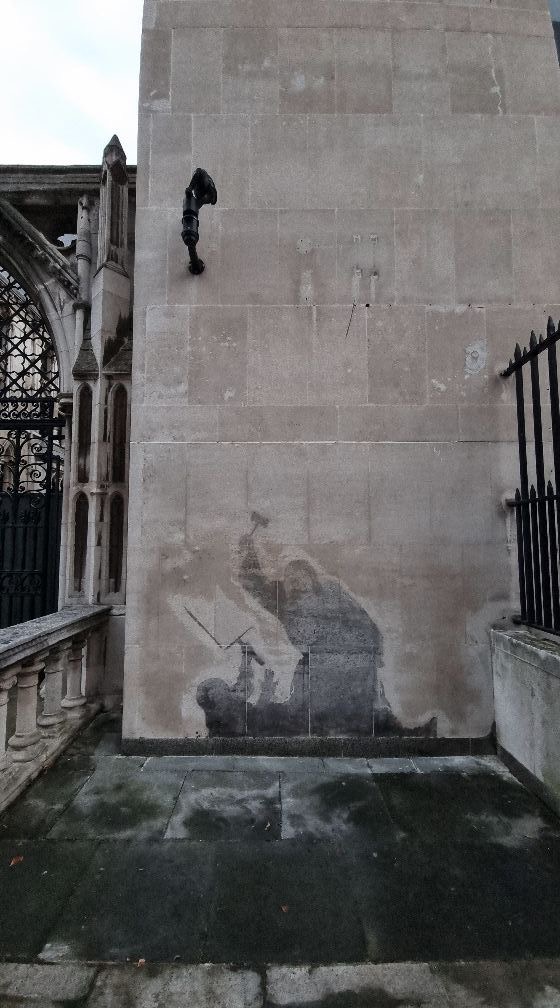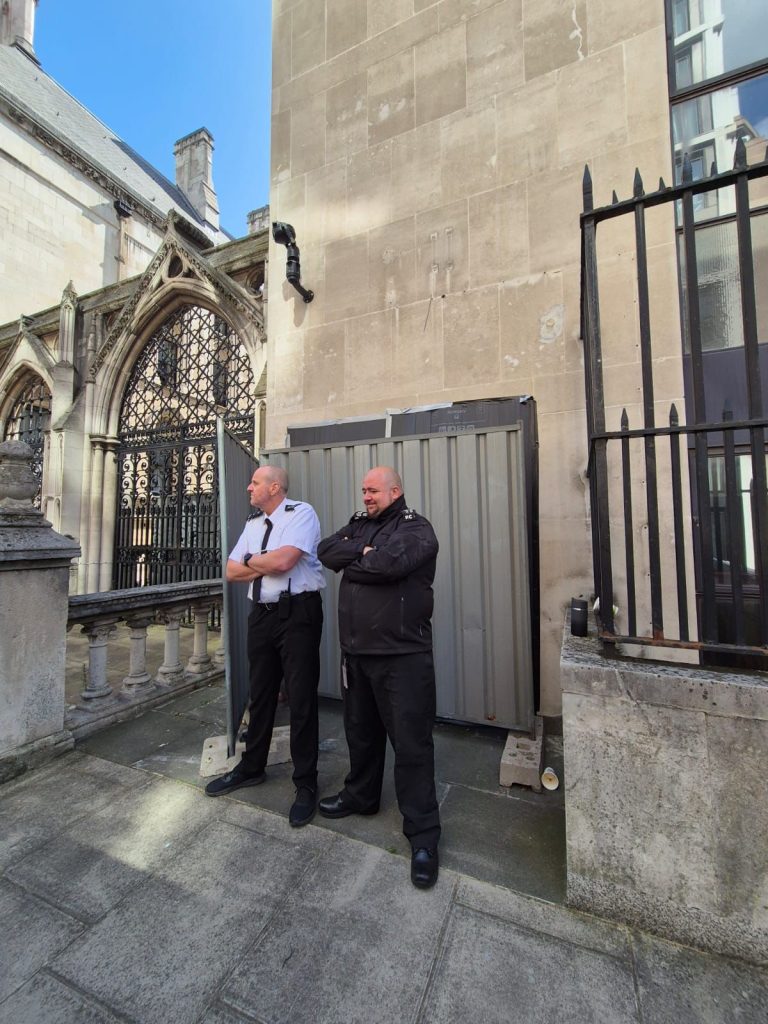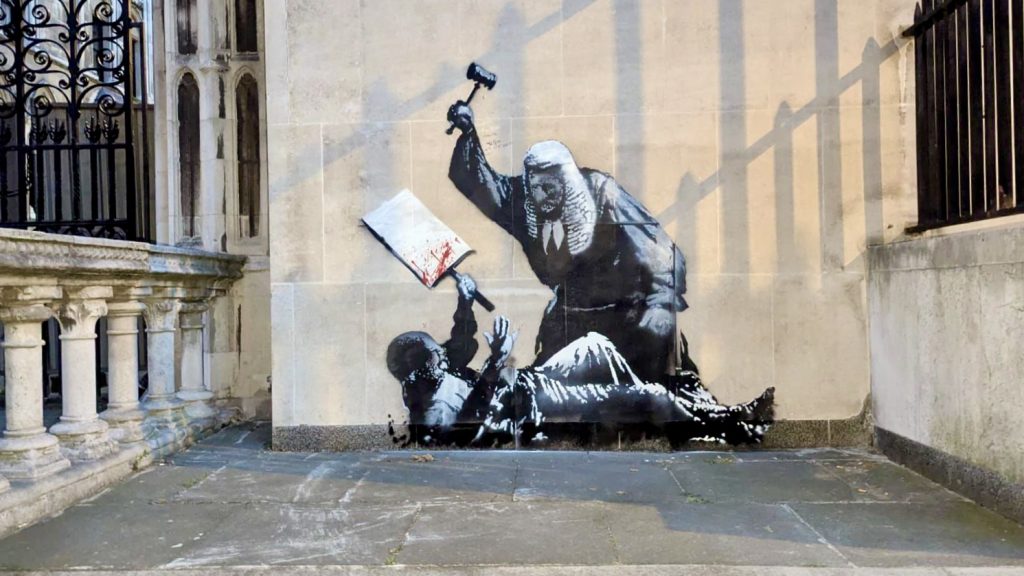The Ghost of Banksy: A Haunting Shadow at the Royal Courts of Justice
Just one day after it appeared, Banksy’s mural outside the Royal Courts of Justice has been attacked by removal crews. Once a provocative image of a judge wielding his gavel as a weapon over a fallen protester, the wall now bears only a faint outline. Yet even in its erasure, the work continues to speak… perhaps more hauntingly than before.
A Shadow That Remains
The attempt to scrub the mural away has left a ghostly imprint, the shadow of the figures etched into the porous stone. The surface has absorbed the paint, making complete removal difficult. What remains is a spectral reminder, as if the wall itself refuses to forget. The judge’s form lingers, a haunting echo of the original critique.

The ghostly outline of Banksy’s mural remains on the stone wall after removal. Notice the CCTV position has changed
Erasure as Censorship
The speed with which the mural was covered, guards, black sheeting, then a metal barricade, showed how threatening its message was deemed. Now the attempted removal underscores that unease. Erasure here is not neutral maintenance, but a political act: silencing dissent, sanitising space, and denying the public the right to see and reflect.

Security guards stand in front of Banksy’s mural at the Royal Courts of Justice. Image © Marrosi
A Parallel to Protest
The ghost image resonates with the reality faced by Palestine Action protesters. Just as the mural has been suppressed, so too have activists been criminalised and branded as “terrorists” for taking a stand against the arms trade. Nearly 900 people were arrested in London alone over the weekend, including professionals, older people, young, and health workers. The persistence of the mural’s outline mirrors their resilience and attempts to erase them only reinforce their presence.
Art Cannot Be Erased
In trying to destroy Banksy’s work, the authorities have unintentionally created something new: a haunting artwork of absence and resistance. The faint, stubborn shadow suggests that protest cannot be fully scrubbed away.

Banksy’s Royal Courts mural — a judge strikes down on a protester, exposing the weaponisation of law. Image © Marrosi
Whether intact or half-erased, Banksy’s mural at the Royal Courts of Justice remains one of his most potent statements. Its ghost form is a metaphor for resilience: no matter how much pressure is applied, the call for justice persists. Covered, censored, or washed away, the image still speaks and it reminds us that neither art nor protest can be silenced.
Banksy’s work continues to challenge power, provoke debate, and leave lasting marks, even when erased. For those who want to explore more of his practice, you can discover Banksy artworks in our online store here.